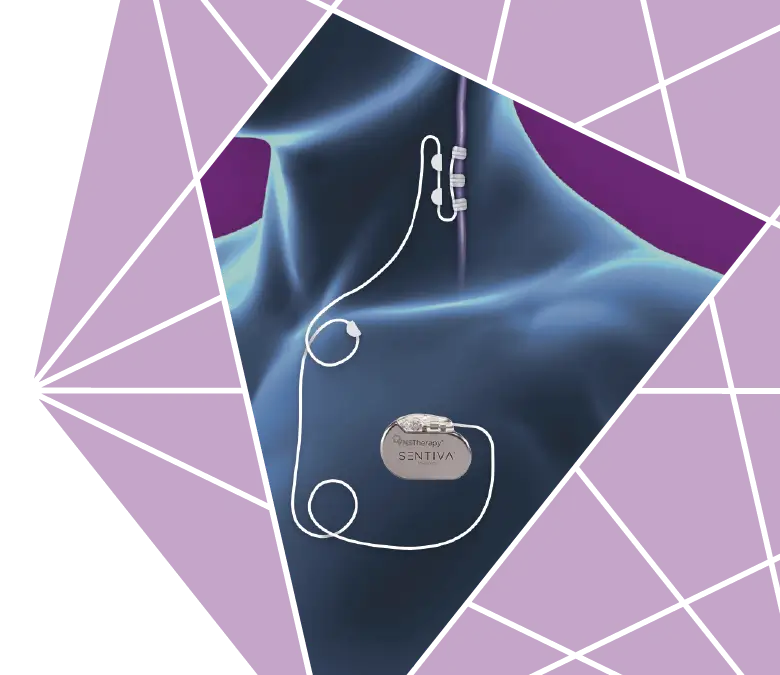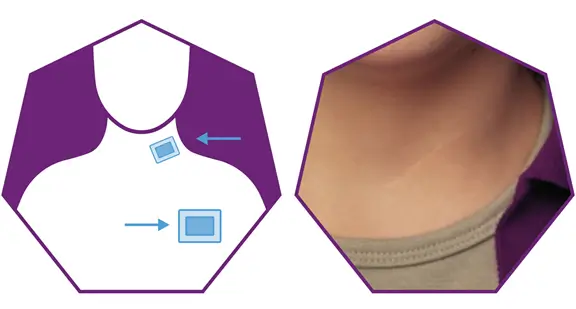Side effects generally only occur during stimulation and usually decrease over time. The most common side effects of VNS Therapy™ include:
Hoarseness
Shortness of breath
Sore throat
Coughing
In regards to the surgical procedure, the most common side effect is infection.
Talk to your physician about warnings, precautions, side effects, and hazards. Ask about risks that you should know about as well as any other issues that might be appropriate to discuss, such as status epilepticus and sudden unexpected death in epilepsy. You can find more safety information here.
Getting comfortable with VNS Therapy™ surgery
Being nervous about surgery is natural - take the time to understand and get comfortable with the VNS TherapyTM implant procedure, the post-op steps and ask your doctor or nurse for any further details.

Understanding vagus nerve stimulation surgery
VNS TherapyTM stimulates a nerve that goes to the brain. This nerve is called the vagus nerve and the treatment is vagus nerve stimulation. This stimulation is delivered by two VNS Therapy components that are implanted in your body (a generator and a lead).
Implanting VNS Therapy does not involve brain surgery. A surgeon will place the generator and lead under your skin during a short surgical procedure lasting 1-2 hours under general anaesthesia.
Watch the video to understand what to expect from vagus nerve stimulation surgery.
The VNS TherapyTM implant procedure
-(1).webp?language=en-GB)

Two small incisions
To start the implant procedure, your surgeon will make two small incisions - one on the left side of your neck and one under the skin in your upper chest.

Connecting the system to the vagus nerve
Your surgeon will pass the lead under your skin and attach one end to the left vagus nerve in your neck with the electrodes. The other end of the lead is then connected to the generator.

Placing the generator
The VNS TherapyTM generator (also known as the 'neurostimulator device' or 'battery') is placed under the skin of your upper chest in the ‘pocket’ that your surgeon made with the incision.

Closing the incisions
Your surgeon will then close the incisions and prepare them for wound dressing, then you'll be moved to the recovery ward.
Common questions about VNS TherapyTM surgery
What does the generator look like?
The small generator (sometimes called a ‘stimulator’) is the device that holds the battery. The latest VNS TherapyTM device is SenTivaTM and is approximately 4.5cm wide by 3.2cm high.
This generator sends signals to the left vagus nerve in the neck through the lead. These signals can help to reduce the number and length of seizures.
.webp?language=en-GB)
What does the lead do?
The thin wire lead connects the generator to the vagus nerve. Two electrodes are part of this lead.
.webp?language=en-GB)
Are there risks linked with the surgery?
The most common side effect of the VNS Therapy implant procedure is infection. As with most surgical procedures, there are some standard risks. Your neurologist and surgeon will discuss these risks with you.

What to expect after VNS TherapyTM surgery
You’re likely to stay overnight in hospital after the implant procedure, but some people may go home the same day.
After surgery, you’ll see two wound dressings where your surgeon made the incisions - one on your chest, and one on the side of your neck. You may feel some soreness afterwards, but this is normal. Before you go home, your doctor or nurse will advise you on how to keep the wounds clean during the healing process.
The most common side effect from vagus nerve stimulation surgery is infection – so talk to your surgeon to understand more about the risks involved.
Common questions about the VNS TherapyTM device and scarring visibility
Will the implanted device be visible to others?
The generator is small, not more than 2 inches (5 cm) in diameter depending on the model. If you have a small or thin frame, the shape of the device may be visible below the left collarbone. If this is a concern for you, we recommend discussing with your doctor.
Will the scars be noticeable?
Each person has different healing and scarring results. You should expect some scarring from the procedure. If scarring is a special concern for you, we recommend discussing this with your surgeon.

The next step in your VNS TherapyTM journey
Feel safe in the knowledge that your epilepsy team is there for you throughout your VNS Therapy™ journey – from surgery, to the clinic, to going home and beyond. Ask your doctor, nurse or surgeon any questions you have and follow all pre-surgery instructions to help you feel prepared. You could download and take the What to Expect from VNS TherapyTM Surgery brochure with you.
Could you talk to someone else who already has VNS Therapy? Your epilepsy team or epilepsy patient association may be able to help.
Frequently Asked Questions
Choose from a range of topics including product safety, procedure, device, MRI, magnet use and more.
VNS Therapy™ Safety Profile
References are available upon request.
The intended audience for this website is visitors in the United Kingdom. VNS Therapy™ for Drug Resistant Epilepsy is not available in all countries, please talk to your doctor.